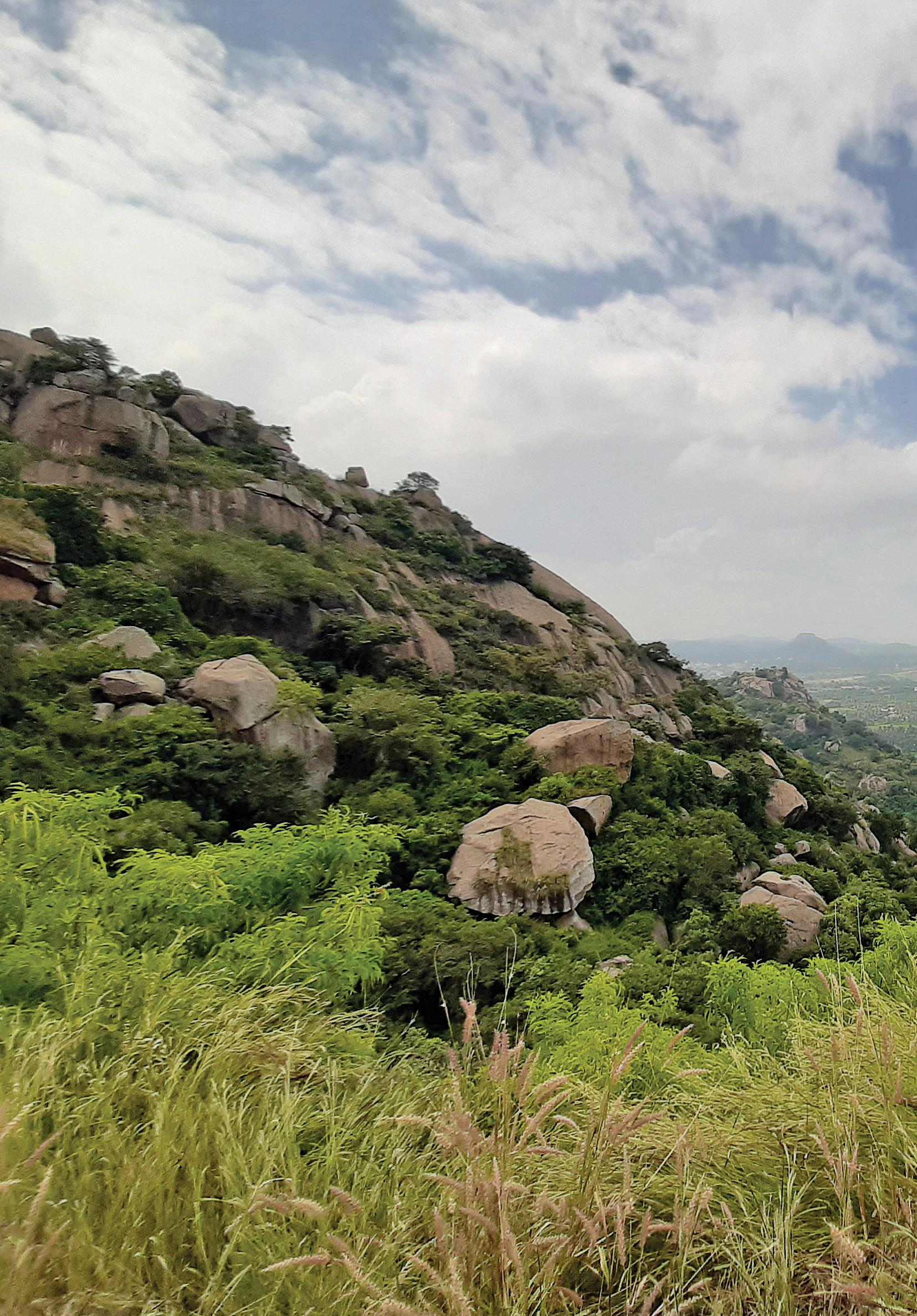
6 minute read
CAMP STORIES
trailblazers junior NATURALIST Igniting a generation of outdoor and nature enthusiasts in partnership with Decathlon
Children after an informative nature trail at a City Park
Advertisement
Satoshi Tajiri, from Tokyo, is known for developing one of the most followed video game and cartoon series around the world, Pokemon. Short for 'Pocket - Monster' his inspiration for the creation of this fantasy world stemmed from his childhood hobby of collecting insects. As a boy, he grew up in rural Japan and dreamed of being an entomologist someday.
Observing nature and wildlife is known to be a source of inspiration for many of the greatest minds on earth. Thus, inculcating this habit from a young age not only makes children more observant but also helps boost their creativity. Trailblazers in partnership with Decathlon, launched its Young Adventurer Programme to help children connect with the outdoors. This programme is a graded course with different levels, each focusing on a different aspect of the environment. Each of these levels are assigned a different cap colour with white being the beginners level and black the expert level.
Recently Trailblazers conducted the second level of this programme, Junior Naturalists at a city park in Bangalore. Children from different parts of the city learned about plant and butterfly identification and the interdependence between both. Keeping up with the digital age, the children were introduced to mobile apps that can help in the identification of species. Inspired by the colours of nature that surrounded them, the children also unleashed their imagination and created stunning paper butterflies. On completion of the trail, the children received the yellow cap badge. This brought them one step closer to achieving their final goal of the black cap.
Children learning about local flora and fauna

Origami session in progress


Young adventurers filling their log book

the tiger country and the pink city Students of an international school recently joined Trailblazers for a wildlife camp in Rajasthan. Although they did have some idea of what to expect, the forest is place of mystery and the unexpected. Right from the start the group stayed in proximity to the forest to get used to its sounds and sights. The camp kicked off with a wildlife Safari in one of the best Wildlife spots of our country, the Ranthambore Tiger Reserve. Bumpy rides on the dusty roads and the enchanting forest put a smile on everyone's faces. As they passed through the dense jungles, the group sighted sambar deer, spotted deer, peacocks, wild boars, marsh crocodiles and many other species in their natural habitat. Unfortunately, the enigmatic tiger eluded the group.
Building on to the excitement of the wildlife safari, Trailblazers engaged the students in fun-filled and informative nature games. The games lead to an in-depth conversation about wildlife conservation and climate change. The group openly shared their thoughts about how we can bring about a positive change for the natural wealth of the country. To understand the historical significance of the region the students visited the Ranthambore fort. Ruled by the Chauhans, Mughals, Nawabs, state of Jaipur and now a property of the Indian government. The fort has visible influences of various religions and cultures. Students were stunned by the extensive history of this formidable fort.
A visit to Rajasthan is incomplete without a visit to the pink city, Jaipur. Students were given various challenges to complete at some of Jaipur’s most iconic sites. They visited the oldest museum of Rajasthan, the Albert Hall Museum which also happens to be the state museum. Different teams competed against each other to complete a scavenger hunt in the museum. Similarly, at Jantar Mantar, students were awestruck by the extraordinary astronomical advancements made in the 18th century using nothing but stones. The visit allowed them to connect the dots between the lessons they learnt in their classrooms and the practical implementations of those concepts. Another visual treat encountered in Jaipur was the Amer fort. Students felt like Rajput rulers as they re-enacted the scenes that had taken place in the Diwan-e-aam, Diwan-e-khaas, Sukh mandir and the Sheesh mahal. As they explored the fort, it made them appreciate the hard work of the artisans that worked on it. Every single structure is not just exceptionally beautiful but also brilliantly showcases the thought that went behind it.
Later, the students surprised the teachers and Trailblazers instructors with their negotiation skills in the colourful markets of Jaipur. They had a gala time buying unique artifacts and souvenirs for themselves and their family members.
Having been sensitized to the environment and historical structures, the student returned home with pleasant memories. The land of rulers - Rajasthan

Vanishing Vultures Raising awareness on a critically endangered species Trailblazers organized an awareness trail on one of the Earth’s most crucial and critically endangered species, Vultures. A key component of the ecosystem, they are responsible for keeping habitats disease free and healthy. They have evolved in a way where their highly acidic digestive system can kill microorganisms that usually proliferate on decaying bodies. The rocky outcrops - a special habitat - act as a perfect roosting and nesting site for two species of vultures. The Long-Billed Vulture and the Egyptian Vulture have both been declared critically endangered by the IUCN (International Union for Conservation of Nature).
This one day trail to this unique place was organized for a group of students to get the best view of the valley and to increase the chances of spotting a vulture. The children hiked up a renowned hill while observing the local flora and fauna. Due to the steep decline in vulture numbers, the group missed out on seeing a vulture. This decline has been majorly caused by the widespread use of a veterinary drug called Diclofenac.
Students were made aware on how the chemical remains in the bodies of the livestock even after their death. Vultures indirectly ingest the chemical when they feed on these carcasses The drug eventually causes the death of these birds on a large scale presumably because of a combination effect of kidney damage and decreased uric acid excretion.
Apart from making the students more aware about the plight of vultures, Trailblazers also made sure the children had a fun time with games and songs. This was just a tiny step from Trailblazers in raising environment conscious citizens. We look forward to introducing generations of children to the wonders of wildlife. Working their way to the top. Join us on our wildlife camps to explore and find out more about the country’s vast natural heritage.
LONG BILLED VULTURE Sci. Gyps indicus
Length: 80-100 cm Wingspan: 205-229 cm Weight: 5500-6300 g

Identification: Bald head, whitish ruff at the neck base, very broad wings (brown, black) and short tail. Habitat: Open country, plains, cliff, forest, grassland, shrubland, savanna, terrestrial. EGYPTIAN VULTURE Sci. Neophron percnopterus

Length: 58-70 cm Wingspan: 155-170 cm Weight: 1600-2200 g

Identification: Odd-looking, pale, narrow bill with a black tip, white with black flight feathers, a bare face solemn-looking yellow face. Habitat: Open or semiopen areas, trees,rocky areas, cliffs, wetlands, grassland, shrubland, terrestrial.







